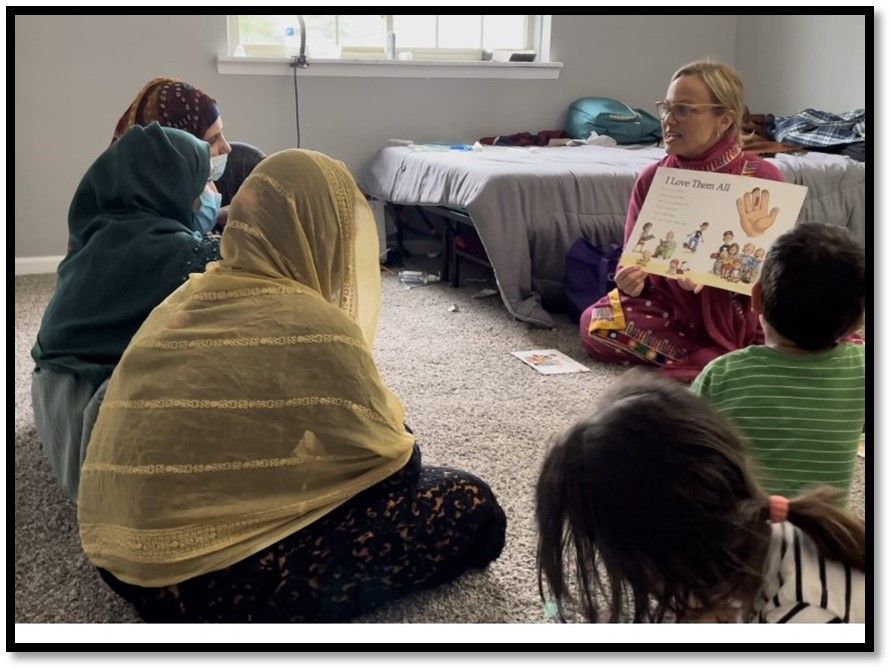‘Your story is what you have.’ -Michelle Obama
While earning my teaching degree many moons ago, I concurrently worked as a ‘Toddler Room’ teacher at a daycare center in my community as a form of income. After graduating, I’ve gone on to teach Kindergarten for over two decades. Needless to say, I have encountered scores of people encountering ‘firsts’. The first time dropping a child off to be cared for by new people, the first time being away from mom or dad, and so much more.

But this was going to be quite different. Teaching newly arrived refugee women and children to speak English for the first time? Wow! Their ‘firsts’ were new territory for me. Of course I had read articles, watched a few interviews, and had heard tales; however, being in the midst of their experience was going to be something I had not encountered. In their home country, these women had not experienced many things that come so naturally here in the US, one of them being attending school. The women and their children that I would be working with would be learning in a ‘formal’ setting (albeit, in their own apartment building ) for the very first time. They would be led in lessons (by another woman, no less!) for the first time. They would be taking what we in education call ‘academic risks’ for the first time. For almost all of them, they would be seeing their own name in print with our English alphabet for the first time. While I understood that these new students of mine had never once attended school in their home country and had never learned to read in their spoken language, I knew that they weren’t here as blank slates.
No, quite the contrary. Their lives were overflowing with stories. Stories of persevering, stories of strength, stories of overcoming obstacles that we cannot fathom.
On that very first day of our English class, we gathered up…me, the moms, and their kids…and the lesson began. I was ready and pulled out all the stops that are appropriate to pull out on the very first lesson for multi-lingual learners; the top-notch curriculum and its vibrant teaching materials, the meaningful comprehensible input, the gestures, the facial expressions, the Total Physical Response, the slow & measured pace, the repetition, the immediate positive feedback. My ‘students’ who overtime became my friends, brought what they had: their perseverance, their strength, and their grit. Were they unsure, timid, excited? Of course! But they soared. And they came back the next day, and the day after that, and the day after that, each time showing growth, laughing with robust joy while witnessing a new story begin to unfold for themselves and their peers.
Sometimes our students are precocious children from around the corner who have been confident English speakers, readers, and writers since they were in preschool. Other times, they are people from across the world who might appear timid and uncertain at first. Either way, we must remember that there are no blank slates. Everyone… everyone …comes with a story and, like my new students & friends, is ready for the next one to begin.
Are you ready to learn how GrapeSEED can help you provide a new story for your multilingual learners? Click the contact us link below!
Interested in learning more about our refugee class?
Be sure to check out the upcoming articles in this five-part series!





